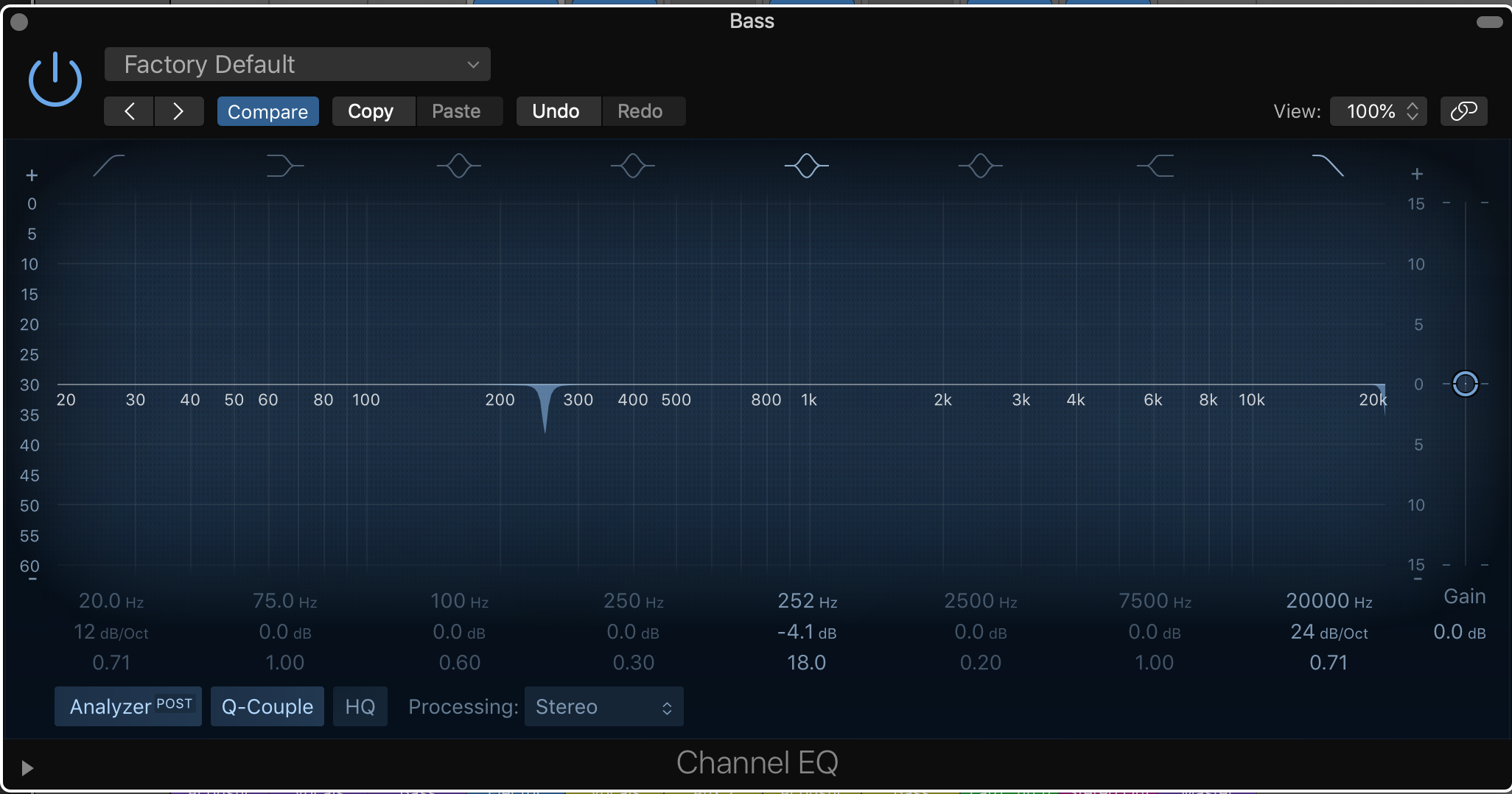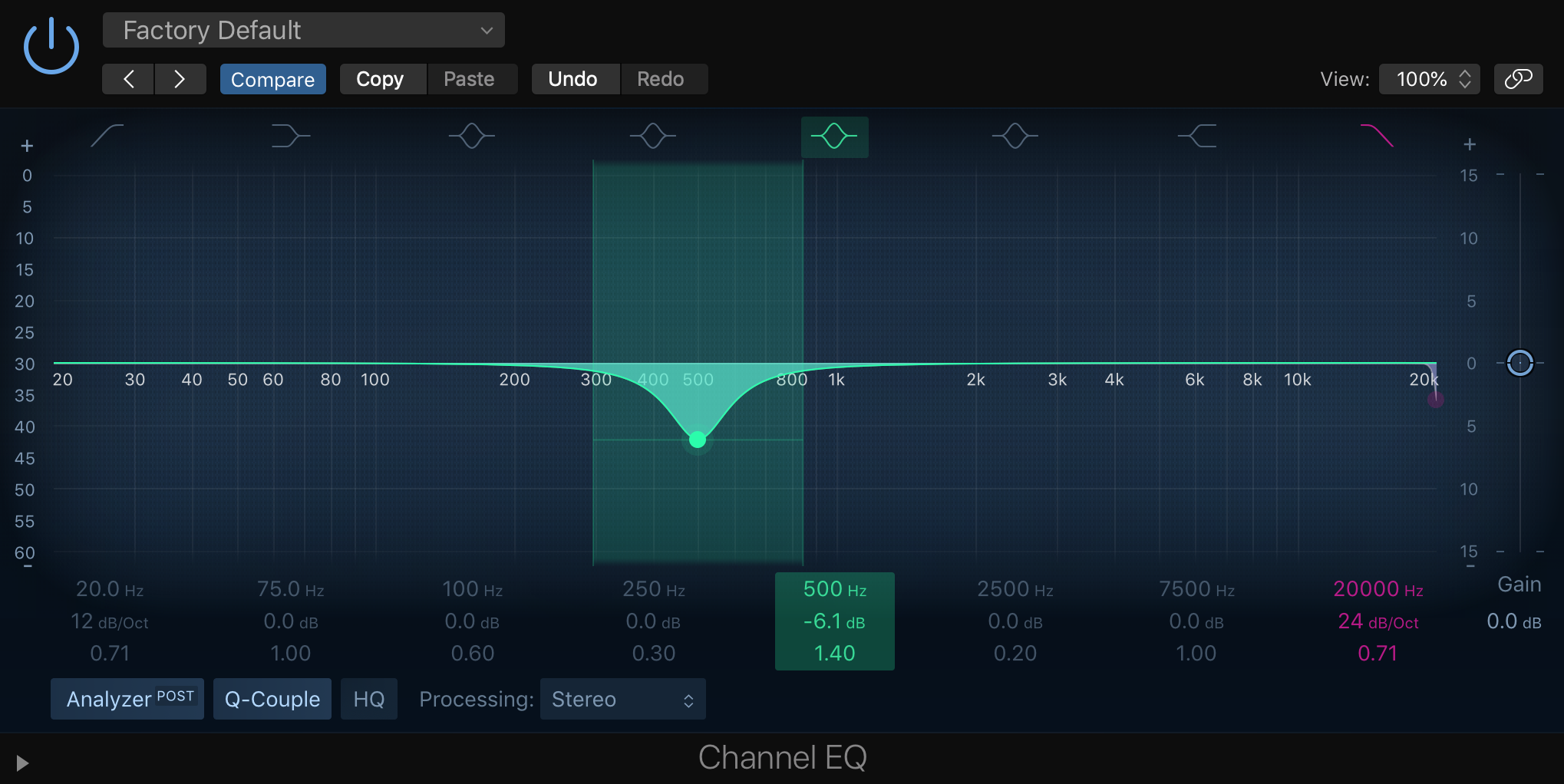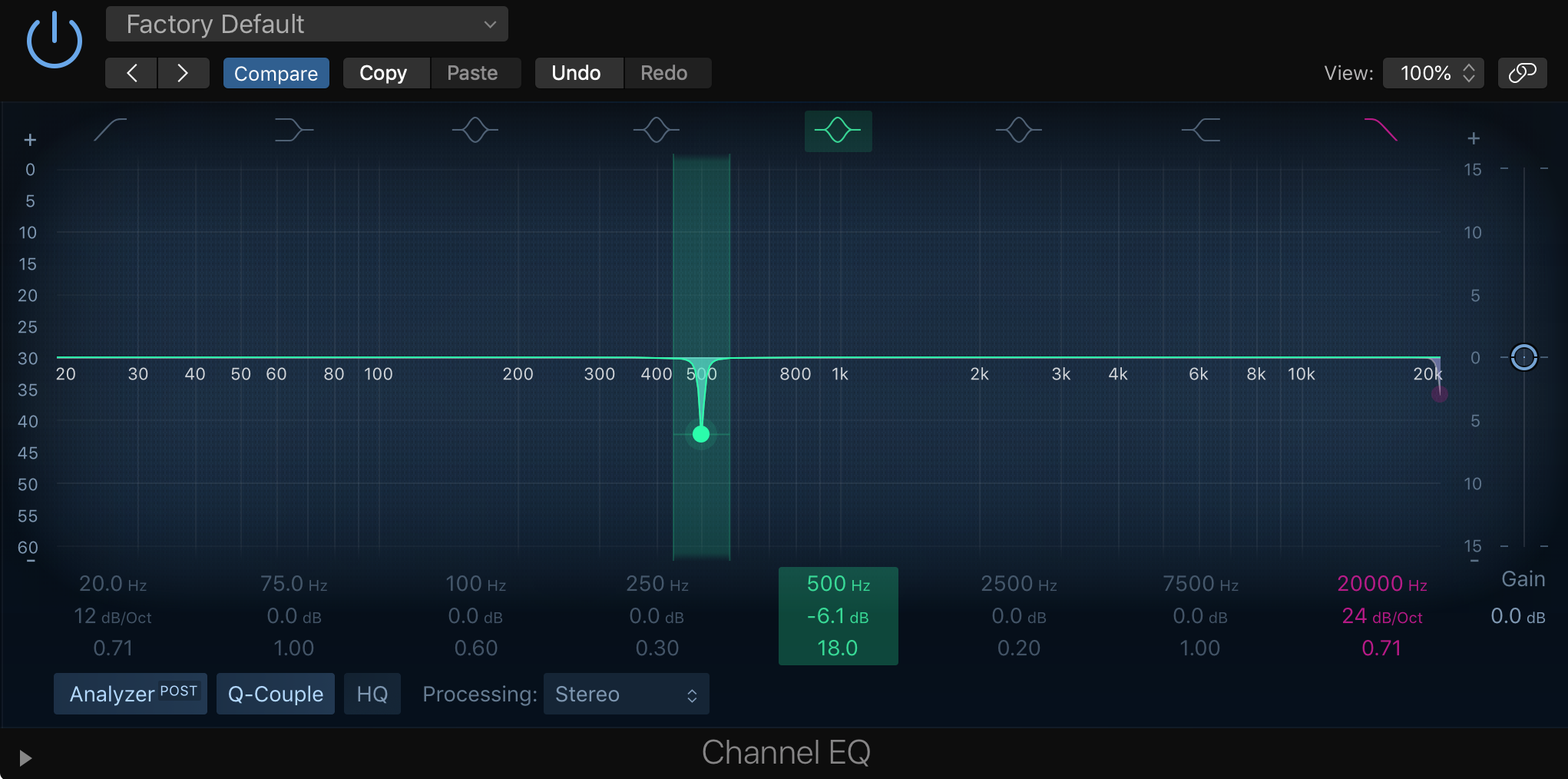Mastering is the process of taking a mixed song and preparing it for distribution. This can be done for CD, vinyl, or digital formats. It's a critical step in the music production process, and one that can make or break a song.
Andrew Garver is a mastering engineer based in Los Angeles. He has over 10 years of experience in the industry, and has worked with some of the biggest names in music. If you want to see who's on his list of credits, check out his AllMusic.com profile
EQ Tips and Tricks
Surgically Fixing Frequencies
If a track sounds muddy, attenuate the 250Hz range.
When you're cutting undesirable frequencies, it's often best to use a narrow (aka high) Q-point. A Q-point, also known as a quality factor, is the overall width of the bandpass.
The screenshot below is an example of a high-bandwidth "cut" around 250Hz. If you look at the visual diagram, it sort of looks like a doctor's scalpel. I think this is why they often call this a surgical cut.
Take note that in mastering, a 3-decibel cut is expected. Anything above 5db or 6db is dramatic.

If a track sounds honky, attenuate 500Hz range.
Looking at the screenshots below, take notice of how I first start with a wide Q-point and an extreme 6db cut. Once I find the frequencies I want to attenuate, I then narrow the Q range and only remove the information I need.

